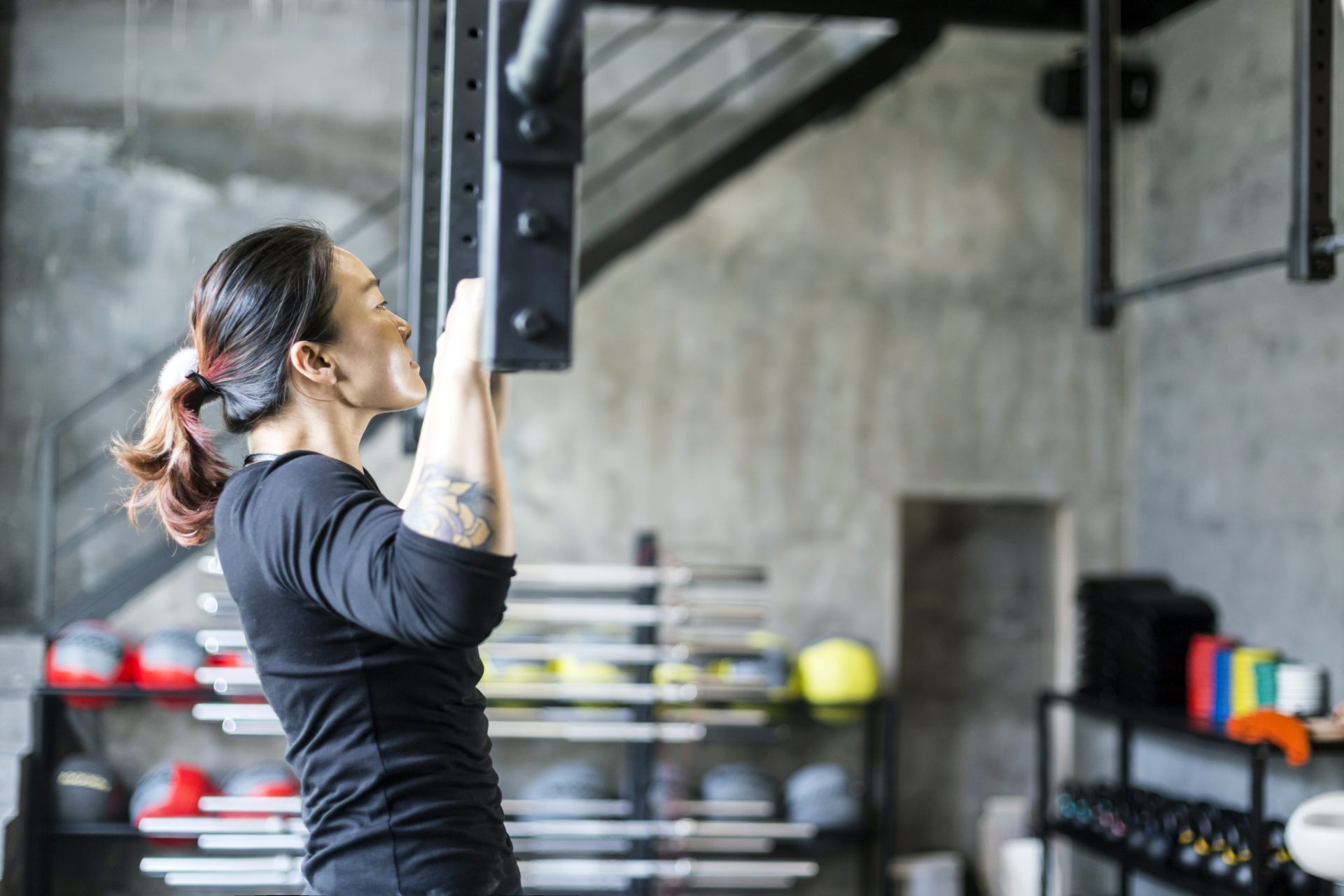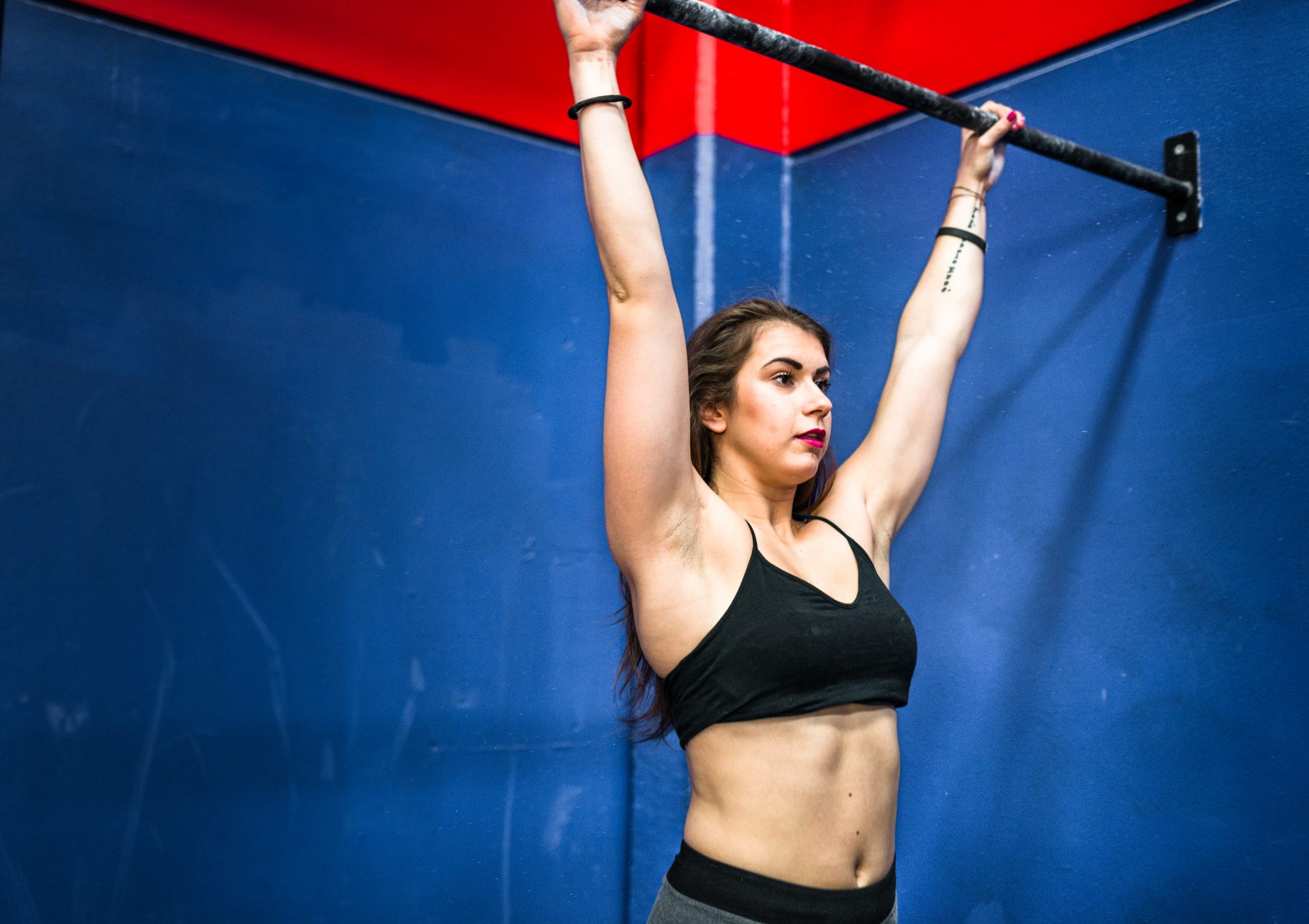3 back exercises to build pull-up strength

Train for an unassisted pull-up by building a stronger back.
Bodyweight exercises are often seen as beginner moves, with those who are more experienced moving onto weighted workouts like back squats or bent-over rows. But there’s one equipment-free exercise that even the strongest struggle with, and that’s pull-ups.
They may only require you and the bar, but pull-ups are a test of pure strength. They take time and dedication to execute, but while they’re hard they’re not impossible.

“The pull-up is one of the most challenging but effective bodyweight exercises,” says fitness trainer and GP Dr Folusha Oluwajana. “They engage many different muscles, giving you a lot of bang for your buck.”
While they mostly target the largest muscle in the back, the lats, “pull-ups also involve many other muscles including the biceps, rhomboids, pecs, deltoids, plus other smaller muscles,” she explains. As a result, they are a great way of training your whole upper body with just one exercise.
“Pull-ups help build the strength in the back, shoulders and arms,” Dr Oluwajana says. “They can do great things for your posture, as well as improve your grip strength.” And, if you ever wanted to mix things up a bit, you can also use different variations to alter the emphasis on different muscles, for example by changing your grip position.
You may also like
Back exercises with dumbbells: build a stronger back to ease aches and pains
Because they can be challenging for most people, learning how to do pull-ups is a rewarding way to train. “Seeing yourself progress and get stronger and more confident will make you feel great,” says Dr Oluwajana.
“Plus, in spite of their difficulty, they are also really time efficient and accessible, since minimal equipment is needed as you only need a bar, and no set up is required.”
How many weeks does it take to train to do an unassisted pull-up?
There is no hard and fast rule for how quickly you should be progressing towards an unassisted pull-up because it varies from person to person. “Several factors can affect your pull-up progress, such as pre-existing upper body strength, grip strength, your total body weight or how frequently you can train and recover,” says Dr Oluwajana.

Depending on the individual and how often you train for it, you can achieve your first unassisted pull-up in anything from four to 12 weeks.
According to Dr Oluwajana, one of the most important things to remember is that you need to be consistent. “It may be tough, but don’t be discouraged,” says Dr Oluwajana.
“Start by incorporating your pull-up practice into your training routine two to three times a week,” she advises.
You may also like
Pilates back exercises: 4 ways to strengthen your back
Exercises to help you train to do an unassisted pull-up
Your training regime should incorporate exercises that mimic the movements and work the same muscles as pull-ups do. Here, Dr Oluwajana outlines four of the best that will help you on your way to doing pull-ups unassisted.
Inverted bodyweight rows
“Inverted bodyweight rows are a really good precursor to pull-ups,” says Dr Oluwajana. “They use the same muscles and require you to lift (almost) your own bodyweight. You can use a bar in a squat rack, TRX or gymnastic rings and be sure to start with your body at a more vertical angle initially and as you get stronger move into a more challenging horizontal position.”
- Place the handles of the TRX, rings or bar at around hip height.
- Lie on the floor beneath the equipment, with the handles or bar just above your chest.
- Reach your arms up and take hold of the kit, lifting your back and hips off the floor.
- Roll your shoulders back and down, and squeeze your abs and your glutes to maintain a straight diagonal line from your head to your feet.
- Pull your chest towards the bar and slowly lower back down.
Dead hangs
To help prepare your grip and shoulder strength for an unassisted pull-up, try dead hangs. These require you to hold your body bodyweight on a pull-up bar but without actually pulling yourself up. “They help you learn how to engage your back muscles and retract your scapulae in order to initiate a pull-up,” says Dr Oluwajana.
- Place a box or step beneath a pull-up bar.
- Stand on the box to reach the bar and step off it so you are hanging.
- Ensure your grip is slightly wider than shoulder width and roll your shoulders back and down to engage your lats.
- Squeeze your core to ensure you’re hanging in a strong position, rather than swaying.
- Hold for as long as you can.

Assisted pull-ups with a resistance band
Before doing any pull-ups unassisted, try doing them using a long resistance band to support your weight. “As you get stronger, use a lighter band for less support,” says Dr Oluwajana.
- Place a box or step beneath a pull-up bar.
- Standing on the box, loop a long resistance band around the bar so it tightens on one end and hangs from the bar.
- Pull the band down and place one foot in the bottom of the band.
- Reach up to grab the bar (move slowly so the band doesn’t pull you up).
- Kick away from the box and place your free foot over the top of the banded foot.
- Pull your shoulders back and down to engage your lats and squeeze your core.
- Pull your chin to the bar.
- Slowly lower down.
Negative (or eccentric) pull-ups
“Eccentric training is a great way to build up strength in any exercise,” says Dr Oluwajana.
- Place a box or step beneath a pull-up bar.
- Standing on the box, place your hands on the bar slightly wider than shoulder width.
- Jump up to the top of a pull-up position, with your chin over the bar.
- Squeeze the lats and core as you very slowly lower down until you’re hanging from the bar.
Follow @StrongWomenUK on Instagram for the latest workouts, delicious recipes and motivation from your favourite fitness experts.
Images: Getty
Source: Read Full Article